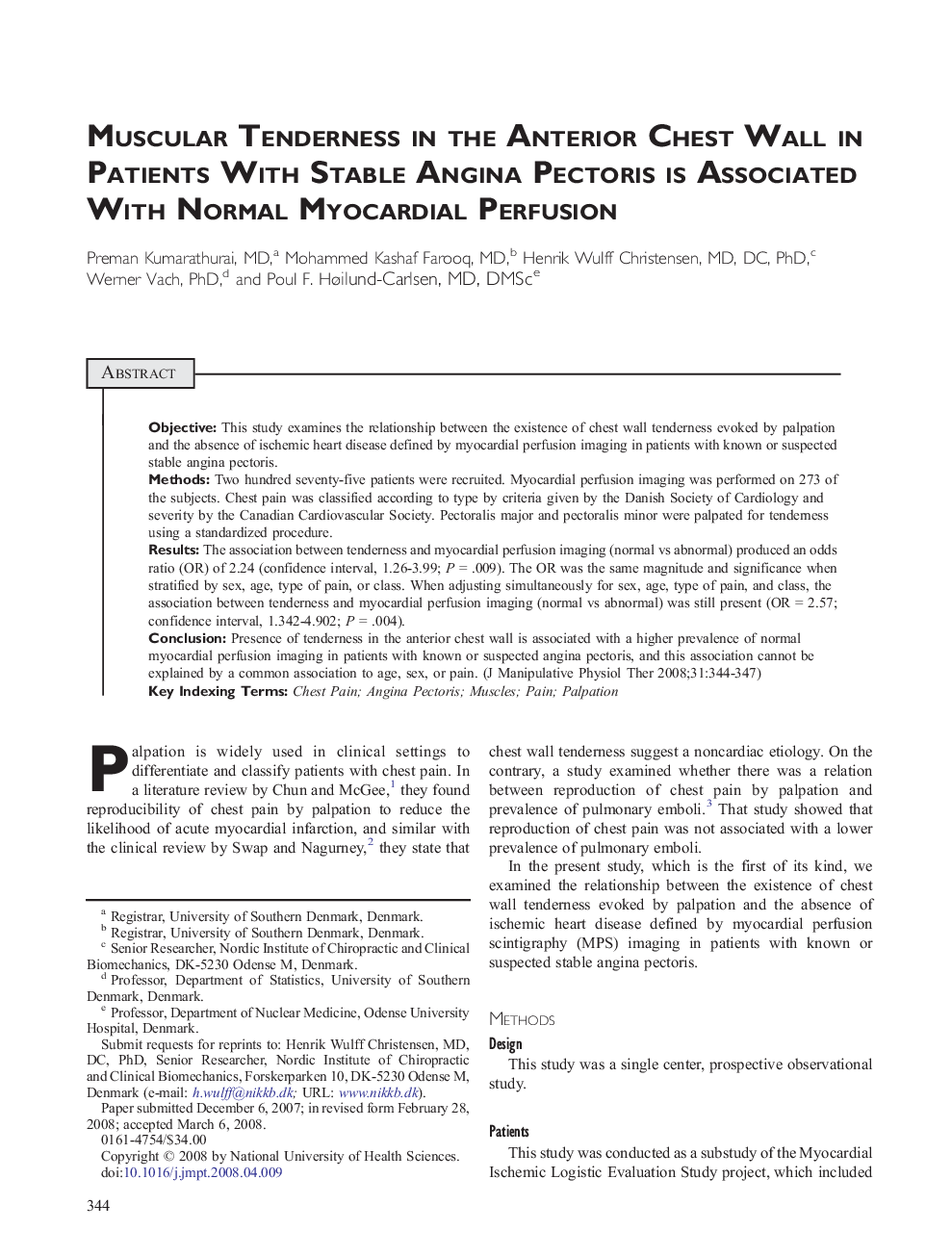| Article ID | Journal | Published Year | Pages | File Type |
|---|---|---|---|---|
| 2621440 | Journal of Manipulative and Physiological Therapeutics | 2008 | 4 Pages |
ObjectiveThis study examines the relationship between the existence of chest wall tenderness evoked by palpation and the absence of ischemic heart disease defined by myocardial perfusion imaging in patients with known or suspected stable angina pectoris.MethodsTwo hundred seventy-five patients were recruited. Myocardial perfusion imaging was performed on 273 of the subjects. Chest pain was classified according to type by criteria given by the Danish Society of Cardiology and severity by the Canadian Cardiovascular Society. Pectoralis major and pectoralis minor were palpated for tenderness using a standardized procedure.ResultsThe association between tenderness and myocardial perfusion imaging (normal vs abnormal) produced an odds ratio (OR) of 2.24 (confidence interval, 1.26-3.99; P = .009). The OR was the same magnitude and significance when stratified by sex, age, type of pain, or class. When adjusting simultaneously for sex, age, type of pain, and class, the association between tenderness and myocardial perfusion imaging (normal vs abnormal) was still present (OR = 2.57; confidence interval, 1.342-4.902; P = .004).ConclusionPresence of tenderness in the anterior chest wall is associated with a higher prevalence of normal myocardial perfusion imaging in patients with known or suspected angina pectoris, and this association cannot be explained by a common association to age, sex, or pain.
